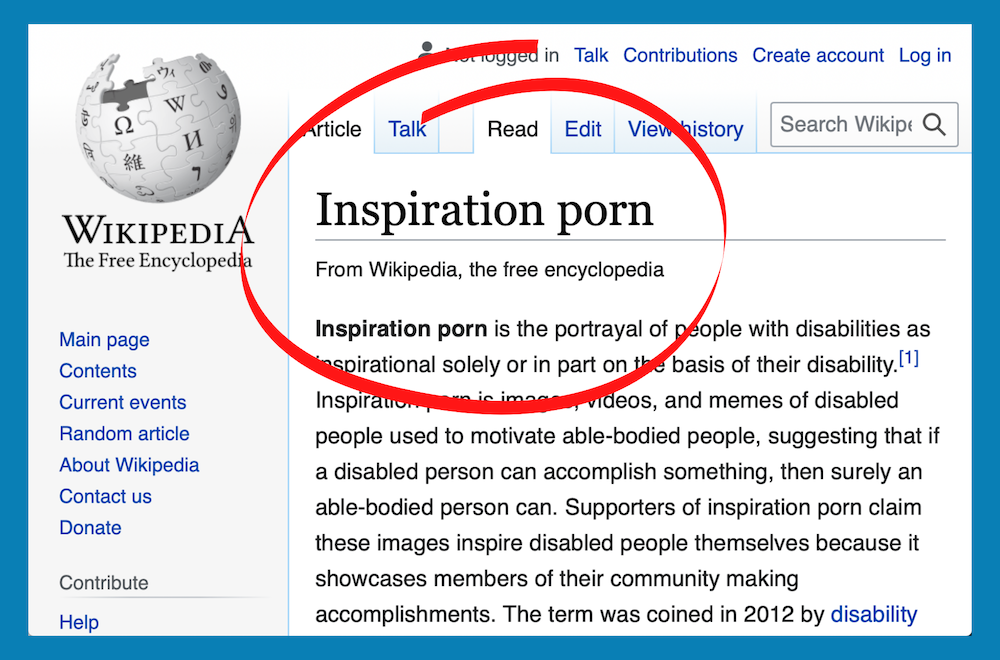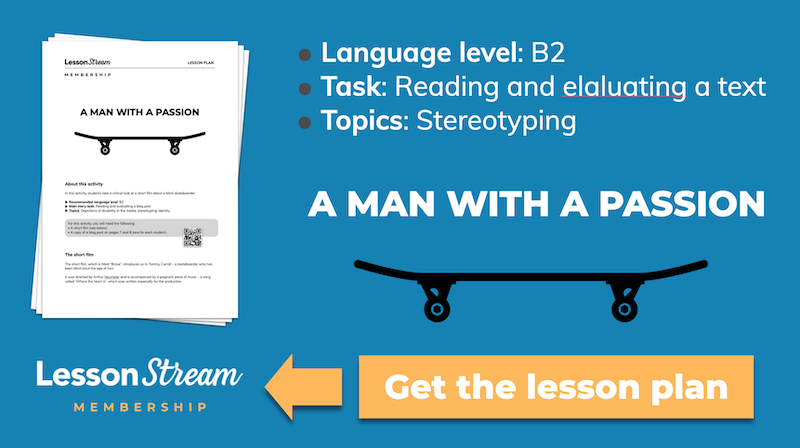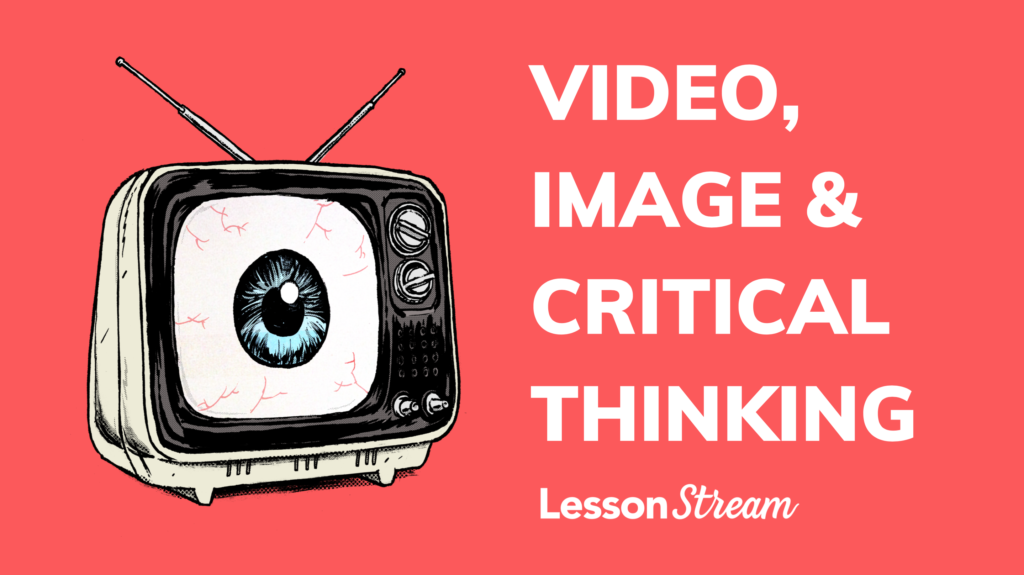The following text has been taken from a lesson plan in the LessonStream Membership. It explores standard depictions of people with disabilities in the media.

A man with a passion
Ever since he was a young boy, Tommy Carroll has had a passion – a passion that requires commitment, patience, and skill.
Some people would describe Tommy’s passion as an extreme sport. Others would say that it is a hobby. For Tommy, it is a way of life.
Always in search of the next adrenaline rush, Tommy pushes himself to the limit. He gets up early every day and goes to the skatepark. There he practises ramp and lip tricks: nose pivots, heel reverts, axle stalls, and more.
For any skateboarder, falling is an important part of the sport. According to Tommy, knowing how to fall is a skill in itself – something that you have to get good at. And protective gear makes all the difference.
In 2013, Eyeforce, a video production company that specializes in extreme sports, made a short film about Tommy. In the film, they followed Tommy to the skatepark and captured his skills on camera.
You can see the short film on Vimeo. And you can probably imagine what you are going to see and hear: a fast and furious video with high energy music.
Or maybe not?
Inspirational?
For many people, this short film will have a lot of appeal. You can see this in the comments underneath the video which include adjectives like ‘inspiring’ and ‘moving’. The film was also featured on Vimeo’s “Staff Picks” page as one of their favourites.
But personally, I feel that the filmmakers have fallen into a common trap. Tommy’s blindness is, without doubt, an essential part of his story. But without intending to do so, the filmmakers have portrayed him as a blind skateboarder rather than a skateboarder who is blind. They have done this in at least two ways.
First of all, it’s the music. The producers of the film, Eyeforce, make a lot of extreme sports videos. In general, the music that they choose has a pace, energy, and emotion that we associate with the sport. In the case of the Tommy Carroll video, however, they made use of a slow and sentimental piece. This pushes us in a sympathetic direction – a direction that leads to a standard stereotype: the person with a disability as an object of pity.
Secondly, courage is subjective. Different people require different levels of courage to do different things. We should not assume that Tommy is more or less courageous than other extreme sports people. At best, ‘Brave’ as a title is obvious and unimaginative. At worst, it is patronizing and leads to another stereotype – people with disabilities as being inspirational heroes.
Perhaps the short film is, what the late activist Stella Young would have described as inspiration porn.
Whose world?
In an interview for the US magazine McSweeney’s, Tommy himself said: “I always felt pressure to try to be the very best at any skatepark because, if I was only ‘good’, people would judge me as just being great for a blind skater. I wanted to be a great skater, period.”
It seems that Tommy doesn’t define himself by his blindness. Can we say that the filmmakers approached him in the same way?
Let’s face it – “Brave” exists for entertainment purposes only. It’s a story that we are very familiar with – we’ve seen it all before. It’s the story of a disability overcome. It does nothing to inform us of the real issues and challenges that people with visual impairment or other disabilities face on a daily basis.

(Recommended blog post: Daily Life Problems Faced by Blind People)
We might think that “Brave” provides us with a glimpse into Tommy’s world. But make no mistake – it’s the other way around. Tommy is brought into ours. And that is a shame because it seems to me that there is an excellent story in here somewhere.
Video, Image & Critical Thinking is a practical course for practising teachers.
- Get critical about video and image for the purpose of class discussions.
- Help your students to become more media savvy.
- Develop an understanding of stereotyping and ethics in video.
- Recognise dishonesty and fake news on YouTube.
You get instant access to the course and all lesson plans when you join the LessonStream Membership.
It would be great to have you on board!




